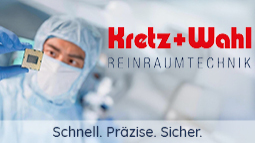Vulcanizing accelerator-free gloves - fact or dream?
How vulcanizing accelerator-freely are your gloves actual? With the present interest of the media in the Naturlatex allergy (also admits as immediately type hypersensitivity, protein allergy or type I allergy) it was only one question of the time, when the interest of the media the Allergi contact turns also to Dermatitis (hypersensitivity or chemical allergy admits IV) as type, was late. Actually approx. 12% (*1 Gibbon, 2001) of the population are potentially of the Allergi contact Dermatitis concerned to develop a Naturlatex allergy compared to persons of the population, whom can have the assessment, potentially endangered between 0,8% to 7%, (*2 Lebenbom Mansour, 1997), are surely worthwhile it to minimize the risk Allergi contact of a Dermatitis. Since the Naturlatex allergy can have lethal consequences, media the interest was surely primarily directed on it. It was valid to minimize or switch this risk off as completely as possible. This life-threatening characteristic of the Naturlatex allergy is surely one of the reasons, why the public interest primarily on this allergy and the associated dangers on the job were steered. As reaction on the increasing interest in the Allergi contact Dermatitis some manufacturers developed now � accelerator Free/so called vulcanizing accelerator-free � gloves. Chemical accelerators/vulcanizing accelerator, e.g. Thiazole, Thiurame and Dithiocarbamate are well-known as contact Sensibilisatoren. They are used usually in the production of Naturlatex, nitrile and neoprene gloves and play an important role during the vulcanisation process. Without these chemical vulcanizing accelerators the most important quality criteria would not exist of Naturlatex and most synthetic gloves (e.g. Barrier function of the gloves with elasticity, elasticity etc.). In the argument with the topic it must be also pointed out that more admits Dermatitis as 2800 chemicals and chemical compounds than potential causes for Allergi contact is (*3 Drake, 1995). The Vulkansations accelerators specified above are thus only a very small part of well-known causers of chemical allergies. Over 80% the proven glove-referred Allergi contact Dermatitis reactions are to be led on the vulcanizing accelerators back. (*4 Heese et al., 1991). This makes clear that removing from vulcanizing accelerators from glove production would mean a large assistance for reducing the danger Allergi contact of a Dermatitis. OVERVIEW OVER THE MEISTVERWENDETEN VULCANIZING ACCELERATORS � THIURAME THIAZOLE DITHIOCARBAMATE Tetramethylthiuram Disulphides (TMTD) Zinc Mercaptobenzothiazole (ZMBT) 128pt; height: 12pt" > Zinc Dibutyldithiocarbamate (ZDBC) Tetramethyl Thiuram Disulphides (TMTM) Mercaptobenzothiazole (MBT) Zinc Dimethyldihiocarbamates (ZDMC) Tetraethyl Thiuram Disulphides (TETD) 12pt" > Benzothiazyl of disulphides (MBTS) Zinc Diethyldithiocarbamate (ZDEC) � Zinc Mercaptobenzimidazole (ZMBI) Zinc Pentamethylene Dithiocarbamate (ZPMC) 12pt" > � � Zinc Pentamethylene Dithicarbamate (ZPD) �Organizations of the Vulkansations accelerators: Methyl of accelerator = ZDMC ethyl of accelerator = ZDECButyl accelerators= ZDBC Pentamethylene accelerator= ZPMCTestmethoden: Unangehm can become it for the consumers, those, in order to avoid Allergi contact a Dermatitis, so-called vulcanizing accelerator-free (� accelerator Free �) of gloves to use, with which in tests however vulcanizing accelerators were proven. Test methods, which are used for it are: � High performance liquid Chromatography � (HPLC) and � Thin Layer Chromatography � (TLC). Thus with 3 gloves, which were characterized as vulcanizing accelerator-free gloves, vulcanizing accelerator arrears one proved. It is thus extremely important to receive a more exact definition of the term � to accelerator Free �. Today most tests are based on aqueous extraction method (destiliertes water or phosphates buffered saline solution extraction) by the HPLC method. Phosphates buffered Kochsalsalzl�sung (PBS) mostly one prefers. However the aqueous extraction method is relatively insufficient and with very low measured values only MBT and MBTS be usually proven could. As example: during with MBT to be measured down it can be with methyl, ethyl and Pentamethylen vulcanizing accelerators fragments up to 20 or 30 ug/ml up to 3ug/ml, could. Also the decision whether TLC or HPLC contains with the analysis the arrears of vulcanizing accelerators of problems, there each method in itself possibly more exactly or not more exactly reacted with the different vulcanizing accelerators. To the confirmation of the weaknesses of these methods a far more aggressive extraction with acetone with the HPLC and TLC method was accomplished. While the acetone extraction method is surely not the method normally usual in the laboratory, it would supplement the PBS excerpt analysis nevertheless in the question whether a product is vulcanizing accelerator free or whether still arrears are present. During the acetones extraction it must be pointed out that the PLC method is more exact with methyl, Butyl and Pentamethylen, while the acetone extraction with the HPLC method supplies better results with MBT and MBTS. Discussion the example the 3 � accelerator so called Free � /Vulkanisations accelerator free gloves, with which actually however vulcanizing accelerators were proven, points the danger out of these products for the consumer. While gloves exhibited neoprene with the aggressive acetone extraction hardly measurable values, it can mean that this method can indicate quite significant residual values to gloves with � the accelerator Free so called �. A possible explanation for this discrepancy surely is that the traditional test methods are not sufficient, if one wants to receive values, which differentiate also still at the different families vulcanizing accelerators. Based on HPLC further explanations could give additional test to method with the mass spectrometry over the presence of vulcanizing accelerator fragments. � MATERIAL HPLC on PBS EXCERPT HPLC on ACETONE EXCERPT TLC on ACETONE EXCERPT 12pt" > Neoprene Not proven Not proven Not proven (Dermashield) Nitrile 1 Not proven 12pt" > Not proven Methyl vulcanizing accelerator of fragments proven (� soft � PF) Nitriles 2 Not proven Not proven Ethyl vulcanizing accelerator of fragments proven 12pt" > (N-DEX FREE) �Overview shows where and with which method with so-called vulcanizing accelerator-free gloves vulcanizing accelerators was proven in view of these nevertheless very different statements the vulcanizing accelerator-free gloves so called, became a whole set of standard nitrile, neoprene and Naturlatex gloves tested. Some these gloves had the reference � low Dermatitis potential � and/or � low R�ckstandswerte at vulcanizing accelerators �. This can suggest that tests were made, in order these data to support.� 7pt" > MATERIAL HPLC on PBS EXCERPT HPLC on ACETONE EXCERPT TLC up ACETONE EXCERPT Latex 1 5pt" > Not proven Methyl, ethyl & Butyl. proven Methyl, ethyl & Butyl. proven Latex 2 Not proven Ethyl & Butyl. proven Ethyl & Butyl. proven Latex 3 Not proven Not proven Methyl, Butyl & Pentamethylene proven 6pt; text align: justify" class=" MsoNormal" > Latex 4 Not proven Either ethyl or Pentamethylene was proven Either ethyl or Pentamethylene was proven Latex 5 Not proven 05pt" > Not proven Ethyl & Butyl. proven Nitriles 1 MBT & MBTS proven MBT & MBTS proven 6pt; text align: justify" class=" MsoNormal" > Butyl of vulcanizing accelerator fragments proven Nitriles 2 Not proven Butyl proven Methyl, Butyl & Pentamethylene proven 6pt; text align: justify" class=" MsoNormal" > Nitriles 3 MBT & MBTS proven Butyl & MBT proven Butyl proven Nitriles 4 Not proven 6pt; text align: justify" class=" MsoNormal" > Ethyl proven Ethyl proven Nitriles 5 Not proven Ethyl proven Ethyl proven 6pt; text align: justify" class=" MsoNormal" > Nitriles 6 Not proven Ethyl proven Ethyl proven Nitriles 7 Not proven 6pt; text align: justify" class=" MsoNormal" > Not proven Ethyl proven Nitriles 8 Not proven Butyl & MBT proven Ethyl & Butyl. proven 7pt" > Nitriles 9 Not proven Not proven Butyl & Ethyl or Pentamethylene proven Nitriles 10 Not proven 05pt" > Not proven Methyl & Butyl of fragments proven Neoprene Not proven Not proven Ethyl & Butyl. proven Overview shows the found arrears of vulcanizing accelerators with standard gloves of nitriles No. 9 = on � low vulcanizing accelerator arrears values � and/or with the note � low Dermatitis potential � is recruited here (claim: � low residual accelerator and/or low dermatitis potential �) the results point out again that the TLC method for measuring the R�ckstandswerte is better suitable of methyl, ethyl, Buthyl and Pentamethylene of vulcanizing accelerator fragments than HPLC. The HPLC method however their advantages has with MBT and MBTS.ABER: if the standard to measuring of R�ckstandswerten of vulcanizing accelerators to be taken (e.g. aqueous extraction method with HPLC) only 2 of the possible R�ckstandswerte is indicated to methods. It does not become surprising, if available, MBT and MBTS to be. If we are on this method alone confidence, standard of gloves not far from � accelerator Free so called � /Vulkanisations accelerator free gloves. Fact is, as long as manufacturers keep MBT and MBTS away from production, the risk of finding R�ckstandswerten of vulcanizing accelerators will be small, if the HPLC method with aqueous extraction method is used. With acetone extraction will result a much more differentiated picture: a far better overview of the possibly high arrears load with different Vulkansations accelerators. This could result from the cocktail of vulcanizing accelerators, which was used in the production, while with so-called � accelerator Free � /Vulkanisations accelerator free ones � gloves normally only one sort vulcanizing accelerator in as small a dose as possible is used. From this view it would make for sense to use vulcanizing accelerators which are not provable with or other method. Interestingly enough straight is not with the gloves a reference on the packing, which on � low R�ckstandswerte of vulcanizing accelerators/low in residual accelerator � and/or � low Dermatitis danger knows/low dermatitis potential �, those with HPLC method with PBS was tested and thus, according to this test, R�ckstandswerte to have. ZusamenfassungDie preceding analysis gave actually more questions raised than answers and knows this clearly thereupon that urgently need for action exists here for further investigations. While so-called � accelerator Free/vulcanizing accelerator-free is vulcanizing accelerator free � gloves actually not, is it surely nevertheless like that they exhibit at least very low R�ckstandswerte. But whether these � accelerator Free/vulcanizing accelerator-free � gloves less allergy-releasing ingredients (special the gloves, which give the reference: on � low R�ckstandswerte of vulcanizing accelerators/low in residual accelerator � and/or � low Dermatitis the danger/low dermatitis potential � knows) has as standard laboratory gloves should with further investigations be examined. Since the Allergi contact admits Dermatitis for the fact is that its occurrence is strongly dependent on the load and dose, to which one is already exposed endangering person, is surely it the better solution to use so-called � accelerator Free � /Vulkanisations accelerator free ones � gloves since the values are surely smaller here than with standard laboratory gloves. It does not solve however the problem, which has one on a certain chemical person already sensitized. References: *1 Gibbon K.L., McFadden J.P. , Rycroft R.J. (2001, February) British journal OF Dermatology 144 (2): 347-350*2 Lebenbom Mansour, M.H., Oesterle J.R., Owenby D.R., et al. (1997) � The OF latex sensitivity in ambulatory surgical patients: A correlation OF historical factors with positive serum immunoglobin E level � Anesth Analg 85:44 - 49*3 Drake L.A., Dorner W, Goltz R.W. (1995) � Guidelines OF care for contact dermatitis � 32:109 - 113*4 Heese A, Hintzenstern J.V., Peter's K et al. (1991) � Allergic and irritant reactions tons of more rubber gloves in medical health services J at the Acad Dermatol, 25:831 - 839
This text was translated automatically.
SHIELD Scientific B.V
84184 Tiefenbach
Germany









